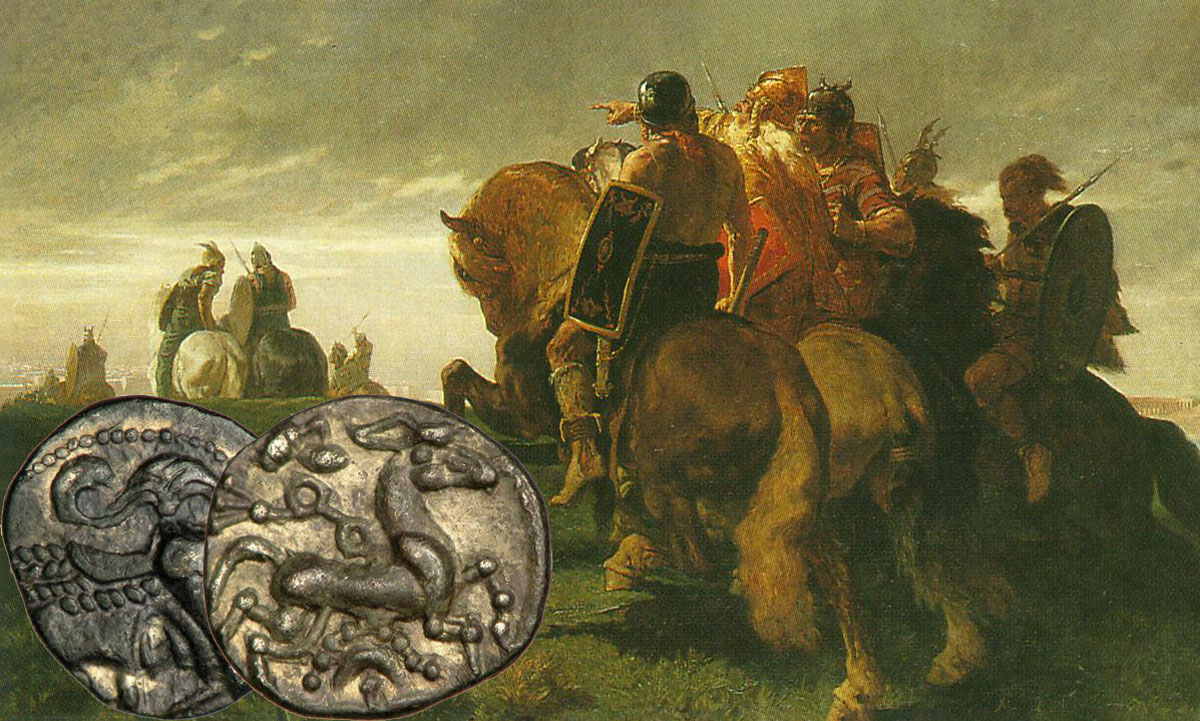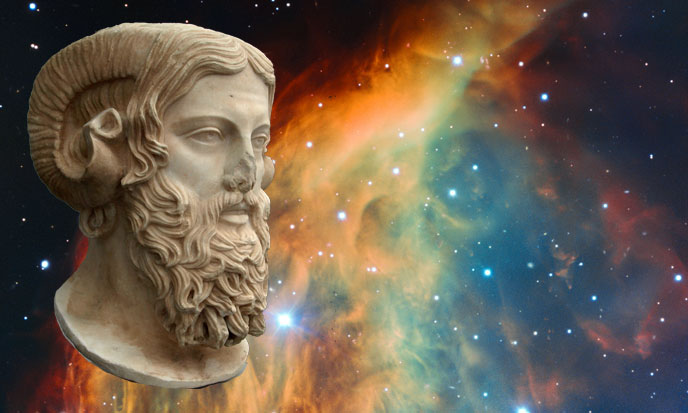
We were not born in Greece, the ancient Greek culture only took elements from earlier cultures, such as Egyptian or Celtic. Our French language does not come only from Rome and from Latin: the Celtic language has left its indelible mark.
For a long time now, I have come back and insisted on the necessary revision of our Western antiquity. The Greco-Latin influence, held as the majority, should not make us forget another influence, omnipresent and almost forgotten, that of the Celts who are also called the Gauls.
First point to clarify: is there a difference between these two peoples, the Celts and the Gauls? Honestly no. We are talking about the same people. These are two labels for the same bottle. Only the use introduced a nuance, reserving the Gaul name to the Celts of Gaul. (source) But we could as well talk about the Gauls of Ireland without saying a stupidity. All Celts are Gauls, as all Gauls are Celts.
In Love and the West, a major work of the last century, Denis de Rougemont makes brilliant analyzes on the dawn of our culture, and on the medieval sources of courtly love – according to him the archetype and the origin of the concept of love he holds for Westerners. It is from this book that I draw quotes from this article.
The image of conquerors that the Romans gave themselves rested in fact only on the writings of Julius Caesar, including his Gallic War, De Bello Gallico, where he strives to belittle the military genius of the Gauls.
“Long before Rome, the Celts had conquered much of present-day Europe, sacked Rome and Delphi, and subjected all the peoples of the Atlantic Ocean to the Black Sea. Asia Minor (Galatians), prefiguring the extension of the Roman Empire rather exactly – less the Italian and Greek peninsulas.But the Celts were not a nation.They had no other unity than that of a civilization whose spiritual principle was maintained by the priestly college of the Druids.” (source)Denis de Rougemont, L’Amour et l’Occident, Paris 1938

This college was “an international institution common to all people of Celtic origin, from the bottom of Brittany and Ireland to Italy and Asia Minor.Travings and meetings of the Druids” cemented the union of peoples Celtic and the feeling of their kinship.” (source)H. Hubert, The Celts The druids formed religious fraternities endowed with very wide powers. They were at the same time soothsayers, magicians, doctors, priests, confessors. They did not write but gave an oral teaching, in gnomic verses, to students whom they kept with them for twenty years.” (source)Denis de Rougemont, L’Amour et l’Occident, Paris 1938
Children from wealthy families came from all over Europe, Asia Minor and the Mediterranean basin to follow this cutting-edge education, reputed to be the most complete in fields as diverse as mathematics, geometry, architecture, magic , elocution, and all previous knowledge, that transmitted by the Hyperboreans and Atlanteans to the first civilized humans of proto-history.
This teaching was taught to many young Greeks, such as Democritus, Anaximander, Pythagoras, Plato, Aristotle, and almost all the ancient hellenic intelligentsia. The Roman patricians drew from them a good deal of their knowledge. Even the young nobles of Egypt went to druidic universities to follow all or part of the enormous university curriculum. (source)d’après H. d’Arbois de Jubainville, Cours de littérature celtique
“It is striking to see how the original Celticism of Europe survived the Roman conquest and the German invasions.” The Gallo-Romans remained mostly disguised Celts. So much so that after the Germanic invasions, Gaul’s fashions and tastes appeared again.” (source)H. Hubert, The Celts Romanesque art and language attest to the importance of the Celtic heritage. Later, it was the monks of Ireland and Brittany -the last refuges of the bardic legends– who evangelized Europe” (source)Denis de Rougemont, L’Amour et l’Occident, Paris 1938 and the recalled the pre-Christian Druidic cult established by Rama himself.
The Druidic College has been brought closer to “institutions quite identical to other Indo-European peoples: Iranian mages, Brahmins of India, pontiffs and flames of Rome.” (source)Denis de Rougemont, L’Amour et l’Occident, Paris 1938 “The flamen bears the same name as the brahman.” (source)J. Vrendryès, Mémoires de la société linguistique
These are the observations of this kind that led to the Indo-European origin of the Celts. This is true and it is false, everything depends on how far we go back in the past. The Celtic invasions of the 6th century BCE and the following centuries are from India via Central Europe.
The official history hardly ventures before this date. But as I explained, if we go back to the year 2000 BCE, at the dawn of the Aries era, we can trace the significant population movements from the Celtic lands of the West to the Far East, across Central Europe, Iran and India. These are the troops and settlers of the Bear clan, companions and warriors of Ram the Aries of Hyperborea. I developed these various points in the following articles:
The world of Rama
- Ram and the Druidesses
- Rama Airlines
- Ramage
- Ram The Aries
- The Odyssey of Rama
- Cernunnos
- TheTeaching Of Lama
- Aeneas’ Odysseus
- The Saying of Iahn
- The People Of The Sea
- The Saying of Lugh
- Rama the Conqueror
- Ramayana And Odyssey
- Eskwander, The Wandering People
- The Thrace of Rama
- Abracadabra
- Amon Rama
- The Empire Of Rama
- Hanuman The Monkey God
- The Rama Bridge
- The Wisdom Of Lama
- The Hundred Names of Venus
- The Hundred Faces Of Rama
- The Emperor of the World
- The Origin of Harem
- Sons of Ram
- Ramifications
- King Naram Sin
- May Thy Name Be No More!
- Pano-Rama
- Druid Ramos
- Ama, Rama …and I

“In the eyes of the Druids the woman is a divine and prophetic being, the Velleda of The Martyrs,François-René de Chateaubriand, Paris,1809 the luminous ghost that appears to the eyes of the Roman general lost in his nocturnal reverie.”Do you know that I am fairy?” she said. Eros has taken on the appearances of the Woman, a symbol of the beyond and of this nostalgia that makes us despise earthly joys, but an equivocal symbol since it tends to confuse the attraction of sex with the endless desire. The Essylt of sacred legends, “object of contemplation, mysterious spectacle”, was the invitation to desire what is beyond embodied forms, but it is beautiful and desirable in itself … And yet its nature is “The Feminine Eternal brings us” says Goethe. And Novalis: “Woman is a goal for man.” (source)Denis de Rougemont, L’Amour et l’Occident, Paris 1938
Maxime who will become under the pen of Louis Aragon: “The future of the man is the woman”. And under that of his faithful servant Jean Ferrat: “Woman is the future of man.” But I prefer the Novalis’ original. The woman is a goal for man, an ignored -thus imperiled- masterpiece on the mostpart of this planet, to the shame of good men.
It is important to put the woman back in the place that belongs to her, that of founder, warrior and prophetess. I do not know if woman is the future of man, but I know that it is our origin to all, as well as the far past of humanity. A past that men, ie males, wanted to eradicate, because it calls into question their supremacy that they consider legitimate, while it is but criminal.
For Rougemont, the Celtic woman is “divine and prophetic in the eyes of the Druids”. Of course she is! But not for the symbolic and smoky reasons that Rougemont evokes. The druids are best placed to know the divinity of the Great Goddess. They remember the previous era, that of Taurus, or rather of Taure,female of Taurus of Hathor. The druidesses came before the druids. They reigned over the pre-Celtic world thanks to their great wisdom and size. But the planetary reign of the Matriarchs ended in a bloodbath. The Amazons, black guards of the Great Goddess, have sown terror and torture across the country. When the giants disappeared, there were only women of the same size as the men, they paid for the exactions of their gigantic sisters. Four thousand years later, women still pay for that.



